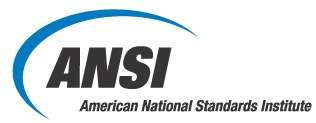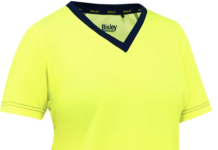Founded in 1918, the American National Standards Institute (ANSI), is a private, not-for-profit, membership organization that acts as a standards coordinating and approval body, not necessarily a standards developer. Its membership consists of individuals and organizations representing a wide range of interests including trade associations, labor unions, professional societies, standards developing organizations, private industry, consumers, academia and government agencies. Presently, there are over 13,000 ANSI-approved American National Standards.
The main functions of ANSI include establishing a variety of accreditation programs, such as third-party product certification. ANSI supports the development and approval of national voluntary standards. The American National Standards Institute also acts as the U.S. representative to the international standards organizations including the International Organization for Standardization (ISO) and the International Electrotechnical Commission (IEC). ANSI is also responsible for creating liaises with government department and agencies on standards’ issues. All the while ANSI is setting standards for protective footwear.
There are two basic requirements all safety footwear must meet: impact and compression. There are three classifications of each according to test results. 1/75, 1/50 and 1/30 are designations for test results done with a 50-pound weight dropped from a set height. C/75, C/50 and C/30 are designations of tests done compressing the safety toes at 2,500 pounds (for C/75), 1,750 pounds (C/50) and 1,000 pounds (C/30). The toe must have a minimum clearance inside the toe area of the shoe of 16/32″ for men’s footwear and 15/32″ for women’s footwear after the tests are completed. Georgia Boot meets all ANSI standards set by OSHA and comply with “ANSI Z41.1 – 1991: American National Standards for Personal Protection Footwear”.
One of the standards of ANSI is the ANSI Z41. The ANSI Z41 standard defines performance measurements and test methods for protective footwear. Effective with the last revision of this standard, the ANSI Z41-1999 requires suppliers and manufactures of Protective Footwear to have independent laboratory test results available to confirm compliance with the standard. And all protective footwear that is certified as meeting ANSI Z41 must first meet the requirements of Section 1 “General Requirements for All Types of Footwear–Impact and Compression Resistance”. Then the requirements of additional sections such as electrical hazard protection, conductive protection and protection against punctures and penetration can then be met.
An important point to remember when considering foot protection and ANSI qualification is that the ANSI standard does not allow for the use of add-on type devices (strap-on foot, toe or metatarsal guards) as a substitute for protective footwear. According to part 4.1.1 of the standard, “The toe box shall be incorporated into the footwear during construction and shall be an integral part of the footwear.” While ANSI excludes add-on devices, it doesn’t necessarily mean they’re not acceptable to OSHA or generally a good method of foot protection. This paradox exists because OSHA states under 1910.136(b) that the footwear shall comply with ANSI or shall be demonstrated by the employer to be equally effective. This means that if an employer can provide documentation, such as testing data proving their add-on devices provide protection equivalent to ANSI performance standards, the add-on devices are acceptable to OSHA. Most manufacturers of add-on devices have submitted their products to independent laboratories for testing. This data and its results can be obtained upon request.
Protective footwear can meet all the requirements of the ANSI standard or specific elements of it, as long as it first meets the requirements for toe protection in Section 1. A steel-toed workboot that meets the impact and compression requirements of the ANSI standard may not provide protection for metatarsal, electrical or penetration hazards. All footwear manufactured to ANSI specifications will be marked with the specific portion of the standard with which it complies. So it is important to still be aware of the protection needed and simply ANSI as a reliable guide to find the best product for the job.
The ANSI standard incorporates a coding system that manufacturers use to identify the portions of the standard with which the footwear complies. The code must be printed, stamped or stitched on one shoe of each pair of protective footwear. The following is an example of an ANSI code that could be found on protective footwear:
ANSI Z41 PT 91 F I/75 C/75 MT/75 Cd EH PR
Line #1: ANSI Z41 PT 91: This line identifies the ANSI standard. The letters PT indicate the protective toe section of the standard. This is followed by the last two digits of the year of the standard with which the footwear meets compliance (1991).
Line #2: F I/75 C/75 MT/75: This line identifies the applicable gender (M or F) for which the footwear is intended. It also identifies the existence of impact resistance (I), the impact resistance rating (75, 50 or 30 foot-pounds), compression resistance (C) and the compression resistance rating (75, 50 or 30 which correlates to 2500 lbs., 1750 lbs., and 1000 lbs. of compression respectively). This line can also include a metatarsal designation (MT) and rating (75, 50 or 30 foot-pounds).
Lines 3 & 4: Cd EH & PR: This area of the code designates conductive properties (Cd), electrical hazard (EH) and puncture resistance (PR), if applicable.
An occasional point of confusion when selecting protective footwear is the difference between steel shanks and steel midsoles. These terms are not interchangeable. A steel shank is a relatively narrow piece of metal that’s inserted into the arch area, strictly for support purposes. Steel midsoles, on the other hand, provide puncture protection on the soles of the footwear. According to the ANSI standard, protective steel midsoles, “shall cover the maximum area of the insole allowed by the construction of the footwear and shall at least extend from the toe to overlap the breast of the heel.” The PR marking in the ANSI compliance code can easily distinguish protective footwear with steel midsoles. The ANSI standard does not contain a marking to distinguish footwear that incorporates steel shanks.
No matter what footwear you choose ANSI knows it is important to follow simple care instruction. All footwear requires routine inspection for cuts, holes, tears, cracks, worn soles and other damage that could compromise the footwear’s protective qualities. Outsoles should be kept free of stones, tacks, nails and other debris. Footwear should be cleaned according to the manufacturer’s instructions. Finding the proper shoe using American National Standard Institute qualification is the first step in protecting your feet but it is also necessary to keep the approved footwear in good shape to ensure its durability and reliability.




